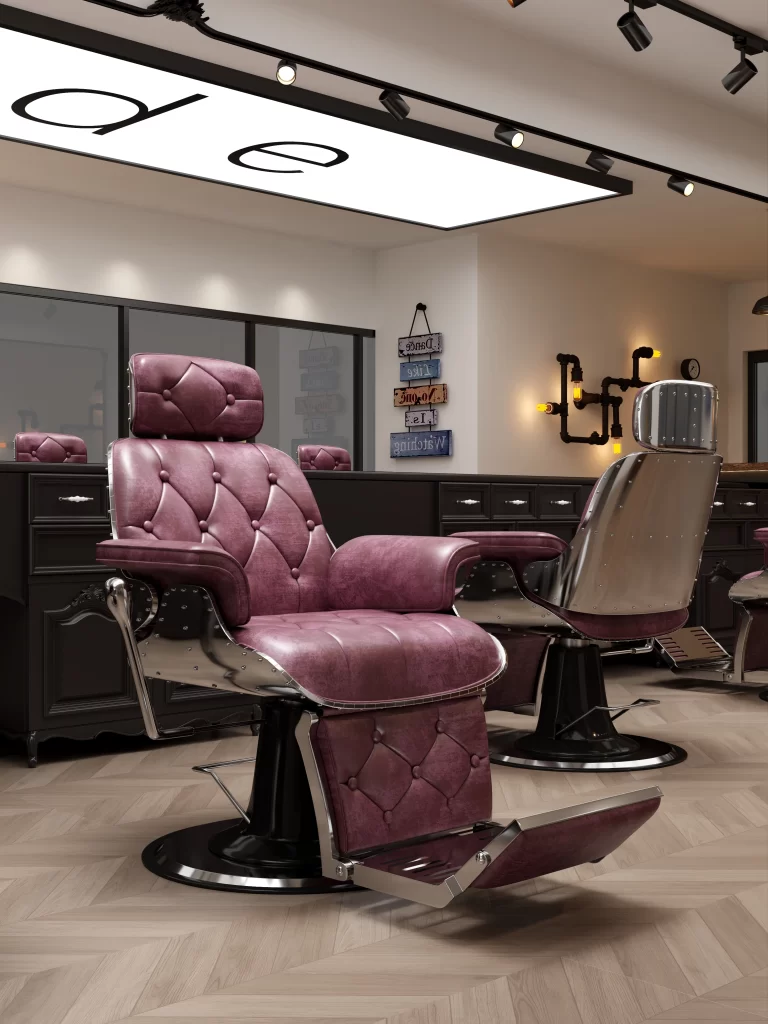Barber Chair: Selection Standards, Model Types, and Care Rules
Why Barber Chairs Are Different Now
Barber chairs these days are really not the same as the ones we made ten years ago. Back then, most chairs were just a heavy base, a recline lever, and some fake leather cover. Simple, yes, but not very comfortable. Now? Customers expect hydraulic lifts, 360-degree rotation, footrests that don’t squeak, even memory foam cushions.
Last month, our factory loaded up three full containers of barber chairs for export—two went to the Middle East (they like more luxury style with chrome finish), one to Europe with a minimalist black-and-wood design. That’s the thing: barber chairs are no longer “one style fits all.” Function, comfort, and branding all come into play.
And to be honest, a good barber chair can change the vibe of your whole shop.
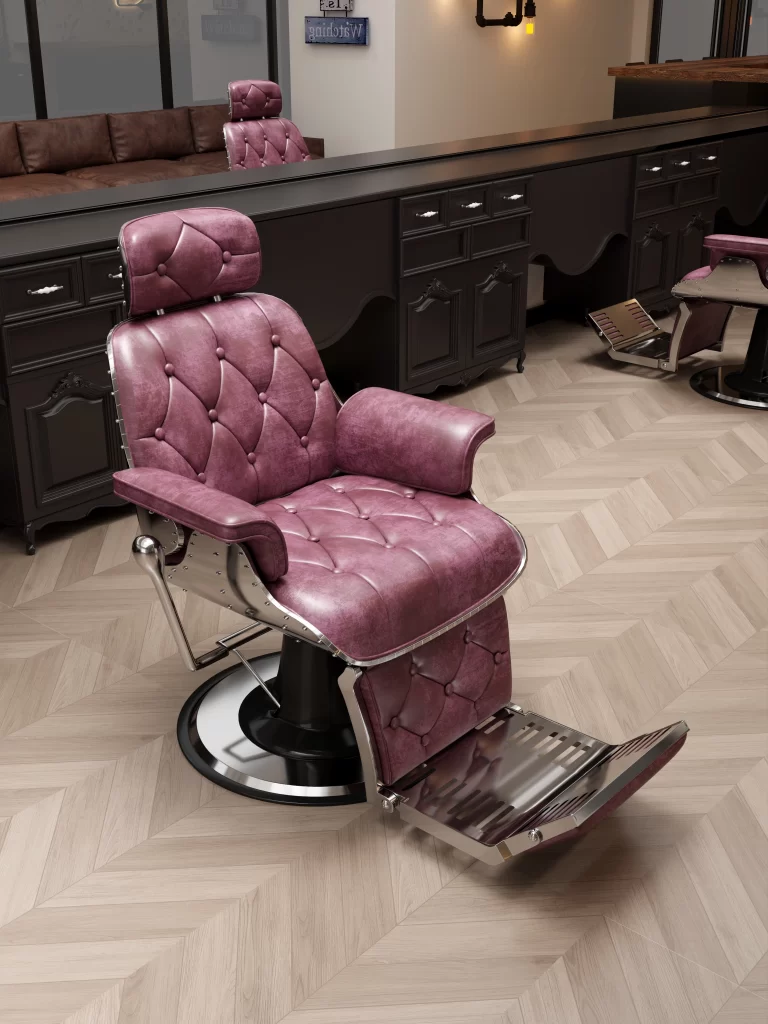
Barber Chair Selection Standards You Should Pay Attention To
When clients ask me, “How do I pick the right barber chair?” I don’t start with price. I usually ask: who are your customers, and how long do you want the chair to last? Because that decides everything.
Here’s a quick table we use in the factory when discussing with clients:
| Standard | What It Means | Why It Matters |
| Base Type | Round, square, or star-shaped | Round looks classic; square is stable; star gives flexibility |
| Pump System | Hydraulic vs electric | Hydraulic is common and reliable; electric looks modern but costs more |
| Upholstery | PU leather, genuine leather, or fabric | PU = affordable, easy clean; leather = premium but needs care (ASTM materials guide) |
| Cushion Density | Foam vs memory foam | Foam is basic; memory foam adds comfort for long services |
| Frame & Armrest | Steel, aluminum, or wood finish | Steel is strong; aluminum is light; wood adds style |
| Recline Angle | 120°–180° | Important for shaving services |
| Weight Capacity | Usually 150–250 kg | Impacts durability, especially for heavy-duty use |
I remember one client tried to save money by using a cheaper base. Looked fine at first, but after six months, the chair started wobbling. In the end, he came back for new bases. That’s why choosing barber chairs isn’t about the cheapest price—it’s about standards that actually match your usage.
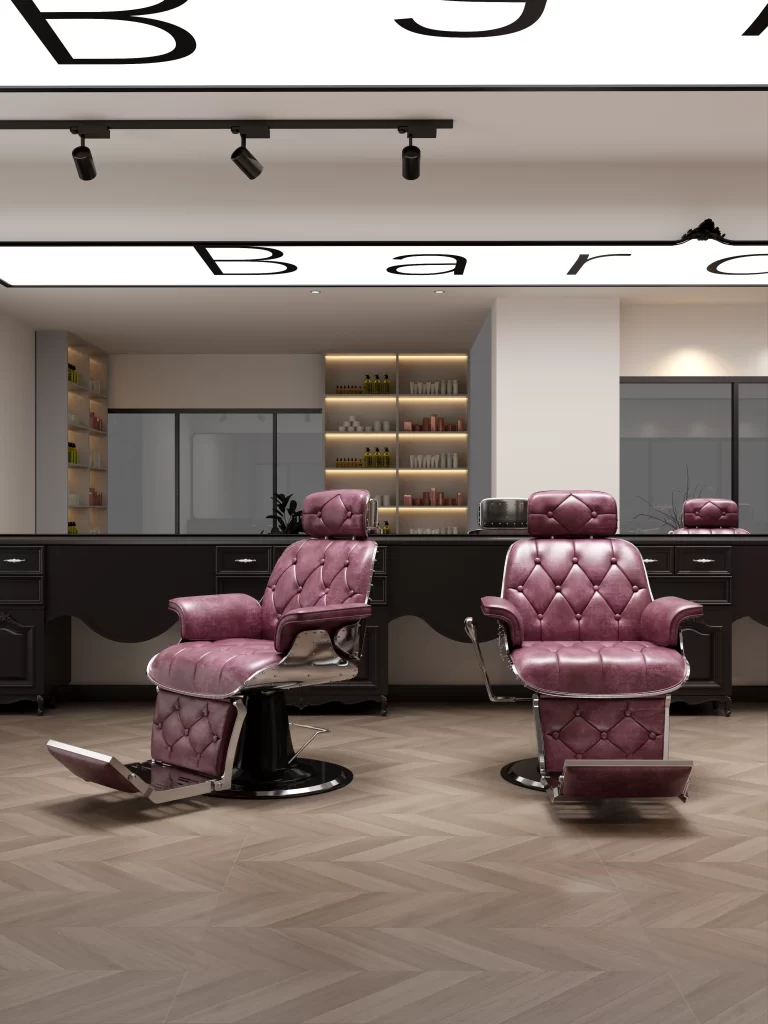
Model Types: What Kind of Barber Chair Do You Need?
In our experience, barber chairs generally fall into three main categories:
1.Basic Functional Models – Standard pump, PU leather, reliable, cost-effective. Perfect for small barbershops or startups.
2.Comfort & Mid-Range Models – Better cushioning, recline options, heavier base. This is the “sweet spot” for most clients.
3.Luxury & Customized Models – Electric adjustment, premium leather, special colors, logo stitching, or even wood armrest finishes.
We’ve made some pretty unusual custom orders. One client in Japan wanted barber chairs with a shorter backrest because his shop ceiling was so low it looked cramped. Another asked us to match the exact red of his brand logo on the chair seams. Took us four tries with different dye suppliers, but we got it. That’s what customized barber chairs are about—building what fits your shop, not just what’s in stock.
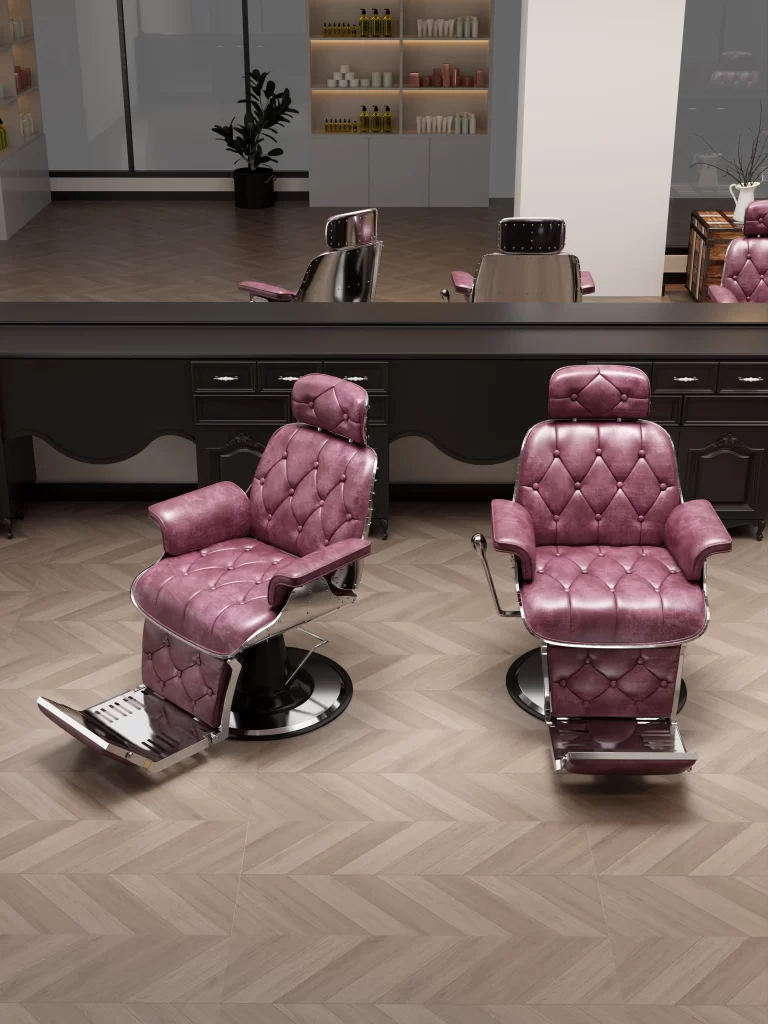
Care Rules: How to Keep Your Barber Chair in Shape
Say the truth: most damage comes from poor daily care, not from “bad quality.” I’ve seen perfectly fine chairs ruined just because no one bothered to clean the pump or check the screws.
My quick maintenance checklist:
Daily Wipe: Use mild soap water on PU or leather, avoid alcohol cleaners (they crack the surface).
Weekly Check: Tighten bolts, check footrest joints, oil the pump if needed.
Monthly Care: Inspect hydraulic oil. If the chair starts sinking slowly, that’s your sign.
Annual Deep Care: For leather models, apply conditioner to keep it soft.
For material safety, Matmatch has good info on cleaning compatibility—especially if you’re mixing hair dye chemicals in the shop.
Because at the end of the day, how you maintain your barber chair decides whether it lasts 2 years or 10.
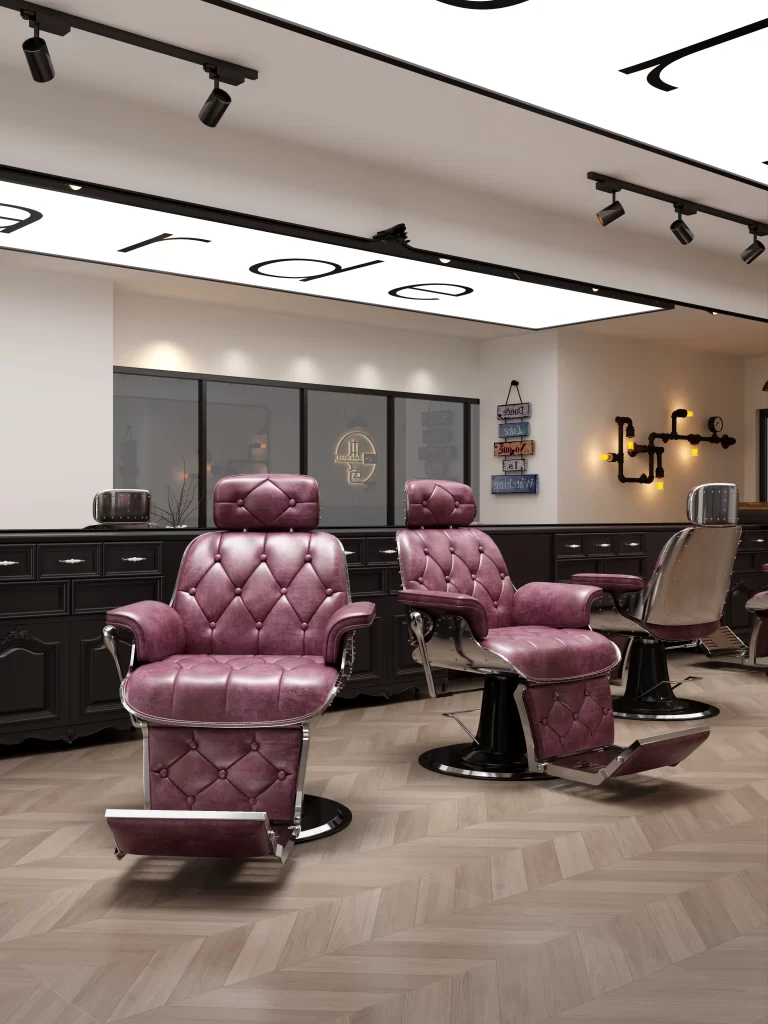
Why Buy from the Factory Directly?
Not to brag, but this is where we have an advantage. Buying from a factory like ours cuts out middleman costs, yes—but more importantly, it means you can customize freely.
Want a heavier base? We can do it. Want a thicker cushion because your customers wait long? Easy. Want your logo embroidered on the headrest? Done that many times.
And when something goes wrong (let’s be real, no product is indestructible), you don’t waste time waiting for a distributor. You call us, the people who built the chair. We know every screw, every pump, every mold we used. That’s the difference.
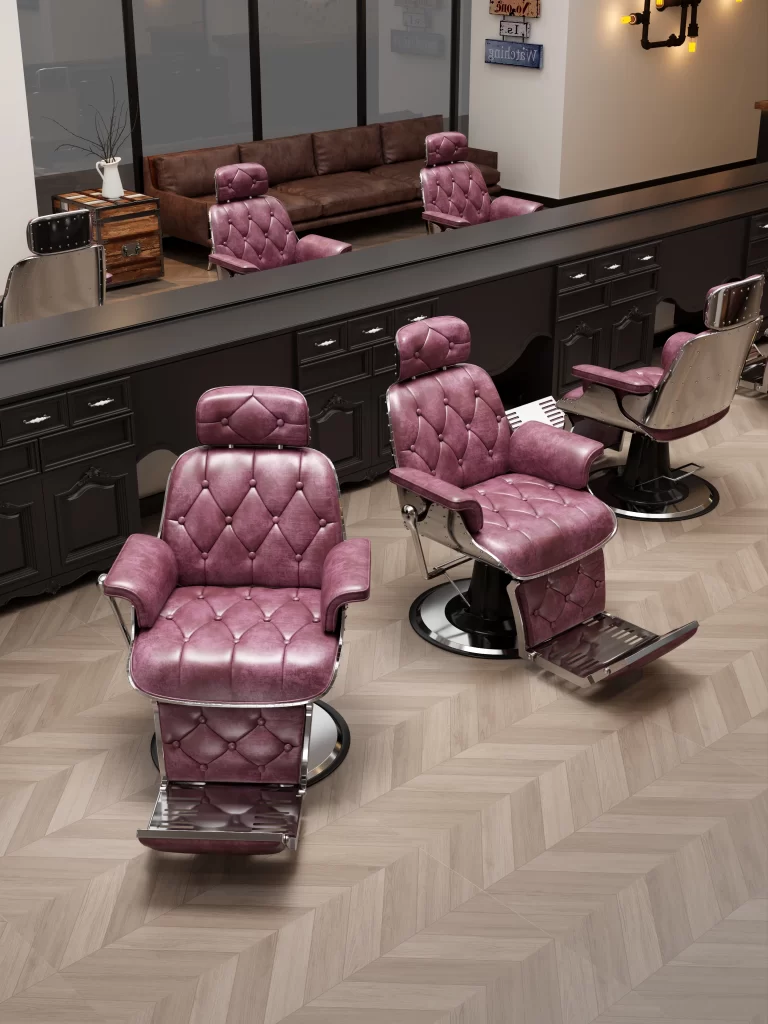
Final Thoughts on Choosing the Right Barber Chair
So if I wrap this up in simple words:
Understand function differences—hydraulic vs electric, basic vs luxury.
Choose based on your real shop needs, not just design.
Think about long-term maintenance, because that’s what keeps your investment alive.
Go direct to the source if you want price advantage and customization.
A barber chair is not just a seat—it’s where your customer spends most of their time. Get it right, and it can elevate your whole salon experience.

